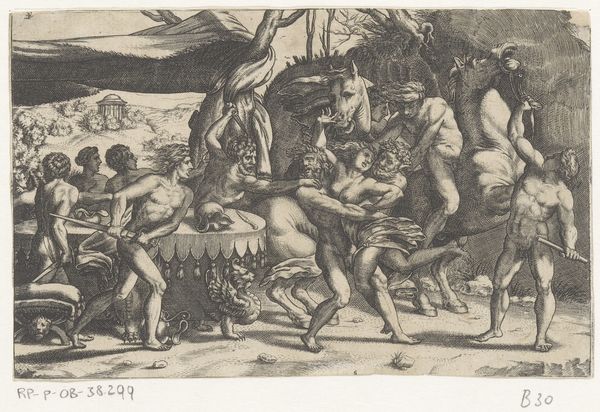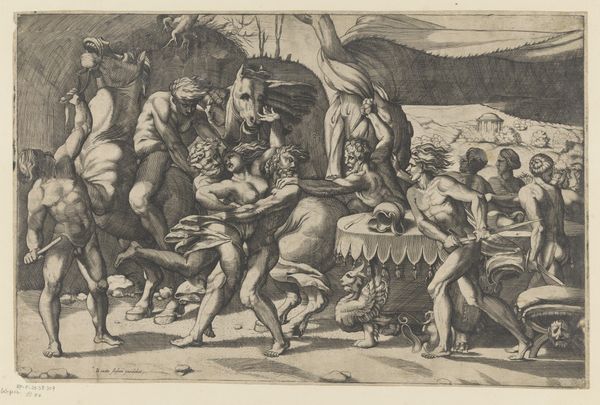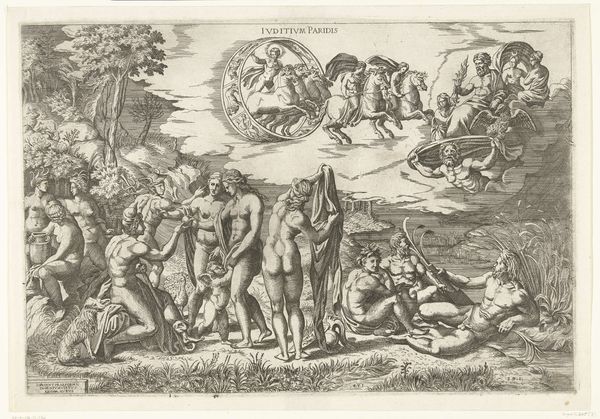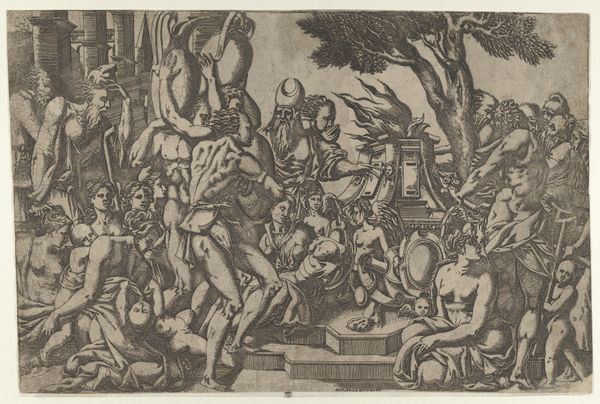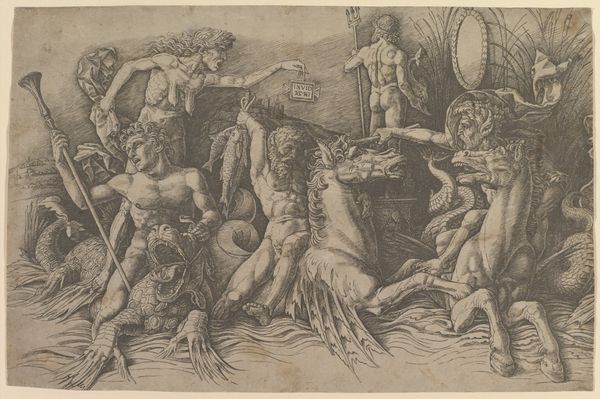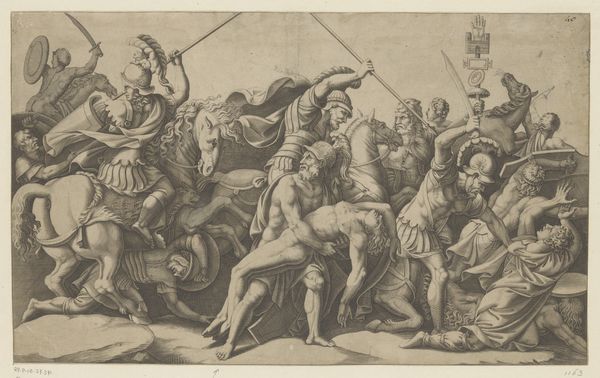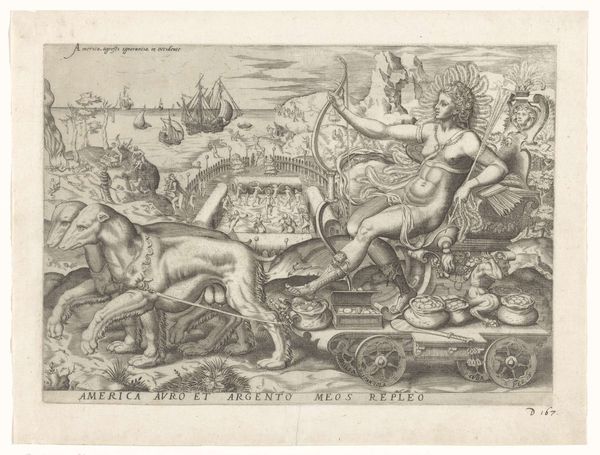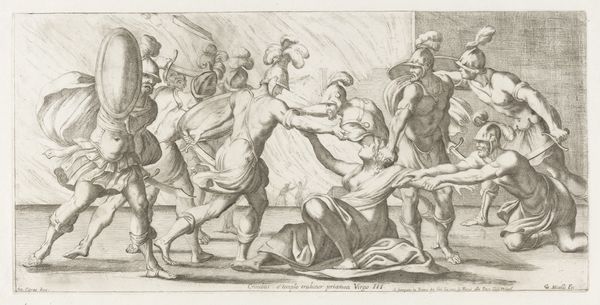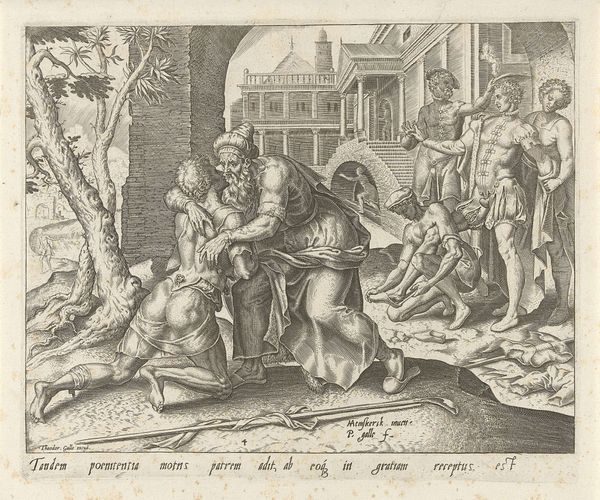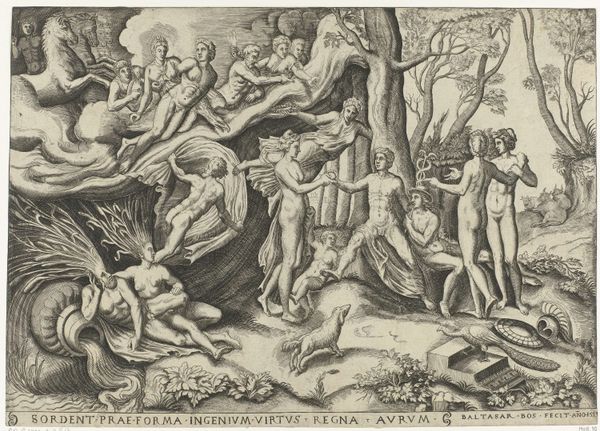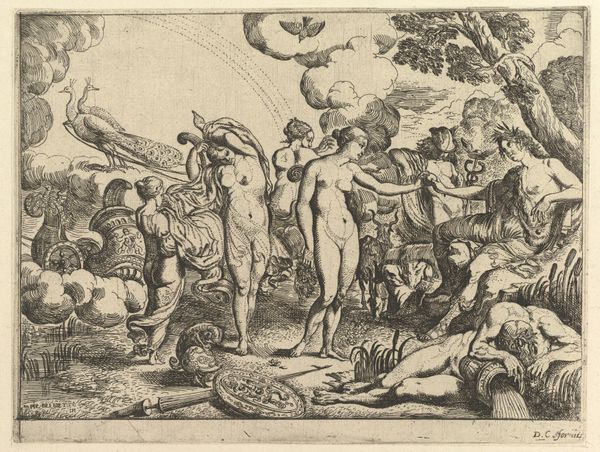
print, engraving
#
allegory
# print
#
caricature
#
mannerism
#
figuration
#
line
#
history-painting
#
engraving
Dimensions: height 284 mm, width 423 mm
Copyright: Rijks Museum: Open Domain
Curator: Here we have "Roof van een vrouw door man en sater," or "Rape of a Woman by a Man and Satyr." This engraving, housed here at the Rijksmuseum, was created after 1542. The artist, alas, is unknown. Editor: Oh, this is wild. My first thought is that it’s… well, crowded! Almost chaotic, really. Like a bizarre party gone wrong. The linework is incredibly detailed though, a whole menagerie squeezed onto one plane. Curator: Yes, Mannerism often aimed for that sense of contained drama and intricate detail. The figures, classical but exaggerated, recall ancient Roman sculpture. Editor: Those are definitely some exaggerated muscles. All that writhing really pulls you in; what's happening? Is it a straight up abduction? It feels... staged, though. A little performative. Curator: Abduction is part of it, certainly. Consider the satyr figure, representing untamed masculine desire. It can evoke historical events through the allegory—think of the story of Europa or the Sabine women. These themes carried weighty cultural implications regarding power dynamics between genders, societies, and cultures. Editor: That changes things! The wild-eyed satyr…it's a brutal visualization of conquest. Then you’ve got the distant idealized building in the background--some kind of utopia forever out of reach in light of all that grabbing? Curator: That’s perceptive. The composition sets violence in stark contrast with an almost idyllic aspiration, hinting at a corrupted past versus a potentially ideal future. A rather cynical viewpoint. Note the theatrical curtains, adding to your point about the "stage," framing this as a moral performance. Editor: It makes you wonder about who is watching who. The little stone gargoyle on the table, for example… that thing looks positively gleeful about all of it. I don't like that. What purpose could it serve in its current composition? Curator: Statues as witnesses is a concept which has been around since antiquity, but here I believe its role is slightly different. It acts as a reflection for a voyeur who has come across the scene – its knowing smile tells of a shared base desire. Editor: Alright, that does it, I'm deeply unsettled now, but I also think I understand this bizarre tableau more now too! That final level of visual complexity really adds depth to the print. It's almost dream-like! Curator: Indeed. Such layering of symbolic imagery requires continued study to comprehend its potency through time. I hope this brief dialogue allows our visitors insight to contemplate that continuity. Editor: It really is disturbing to think about how long themes of power and corruption like this have hung around, and how many different symbols can mean a disturbing number of things! Thanks, gargoyle, I hate it.
Comments
No comments
Be the first to comment and join the conversation on the ultimate creative platform.

